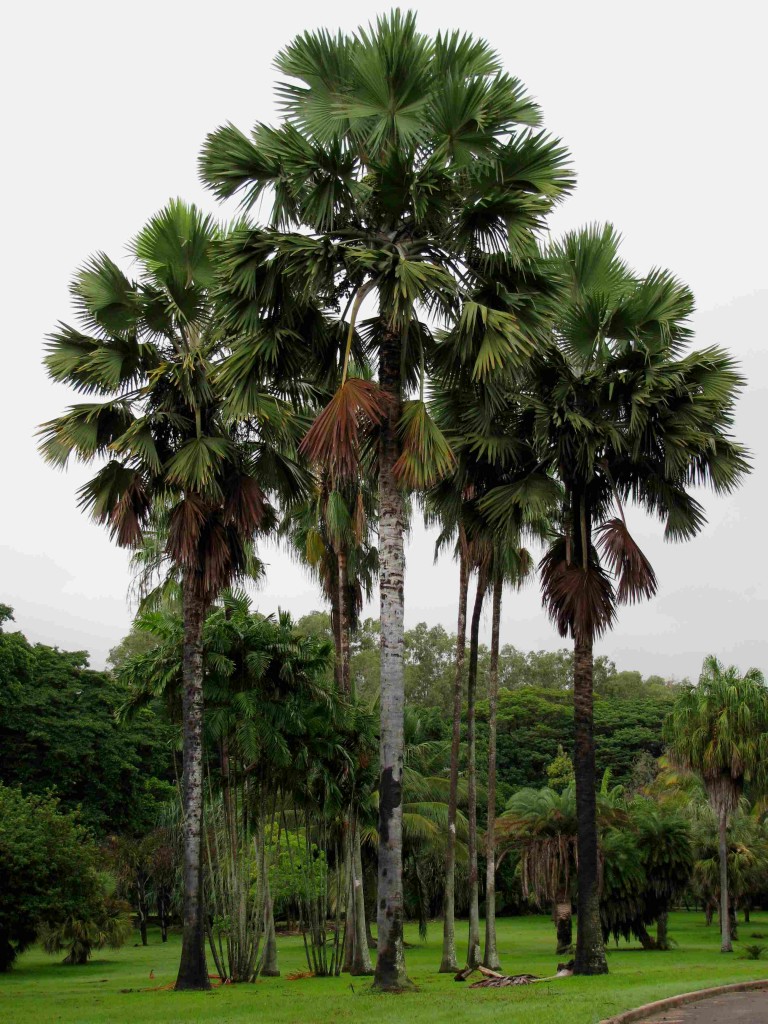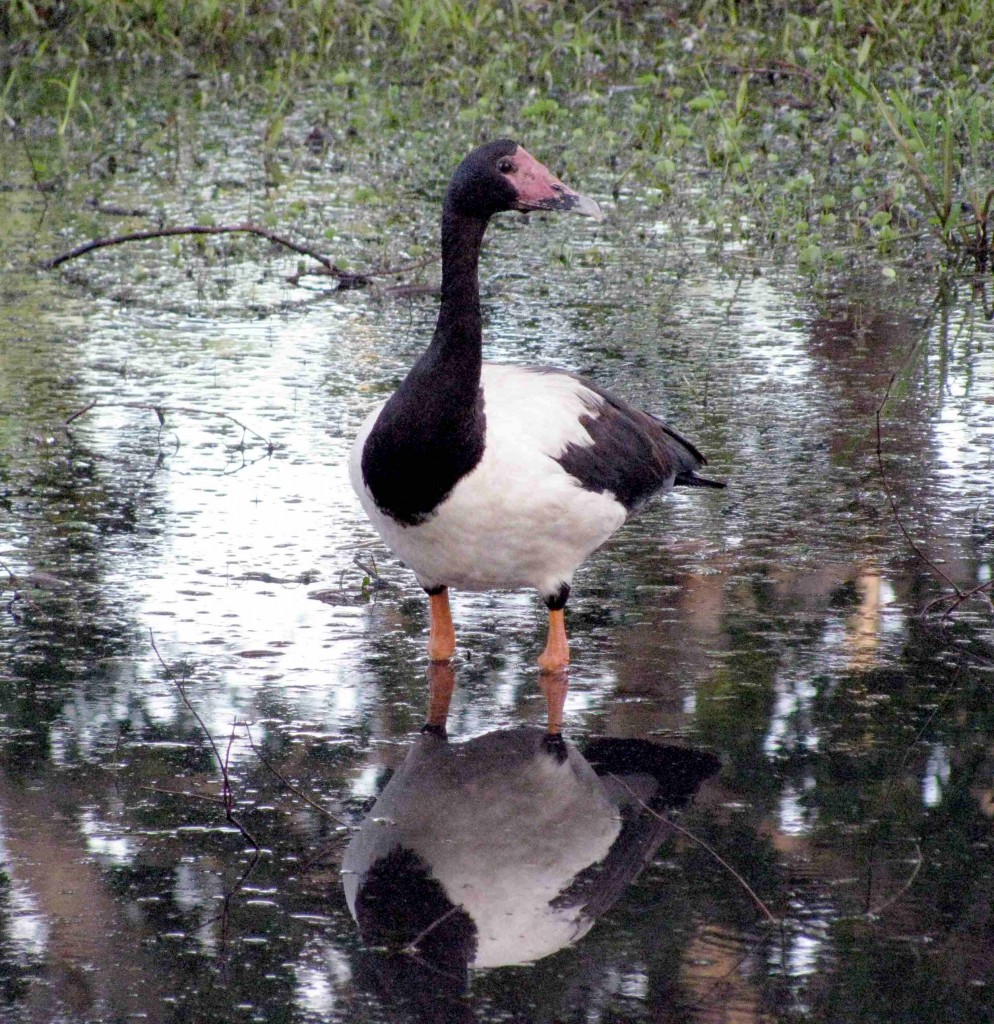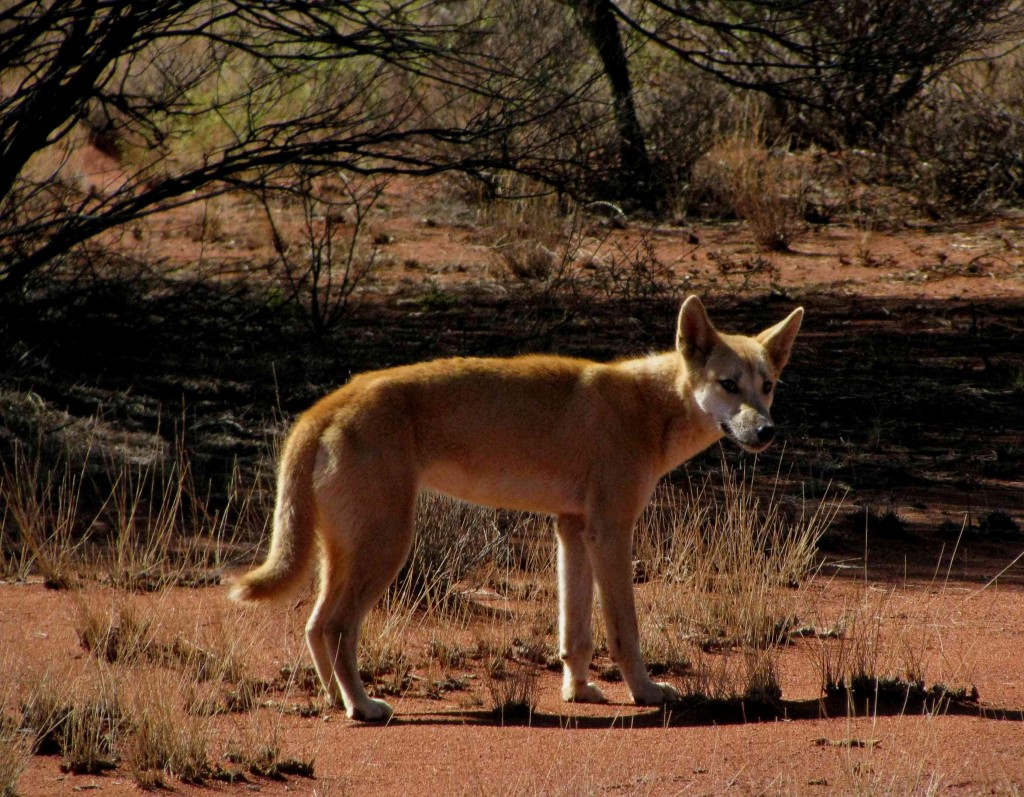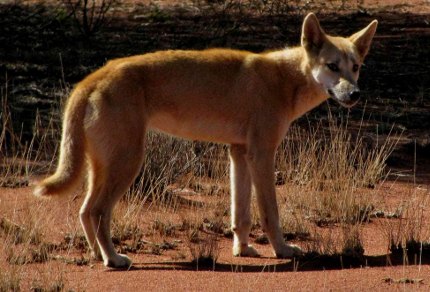
Palms in Anderson Park Botanical Gardens (© Magi Nams )
This morning, I ran and walked at dawn, hoping to beat the sun, which again bathes North Queensland after her stormy affairs with Tropical Cyclones Neville and Olga. My destination was the same as yesterday’s, the Anderson Park Botanical Gardens. As on other days, I found that the peaceful semi-darkness of dawn was a good time to mull over thoughts and impressions that trailed through the night from my most recent yesterday.
Last evening, Vilis and I watched an Australian-made film called Ten Canoes, which earned, among a handful of awards, the Jury Prize at the 2006 Cannes Film Festival. It was created by Rolf de Heer and the People of Ramingining in Central Arnhem Land of the Northern Territory. The film followed a young man who covets one of his brother’s three wives as he learns through his brother’s storytelling what it means to adhere to the law passed down from the time of ‘the ancestors.’ The action flashed back and forth between the time of the covetous youth and the time of the ancestors, the latter so long ago that parts of the story had been forgotten over generations of telling.
Near the beginning of the movie, the youth, his brother, and eight other hunters peeled bark off trees, steamed it, and constructed canoes from it. They then poled the shallow watercraft through a swamp in search of nesting magpie geese and their eggs, taking time to build tree shelters in order to avoid night attack by crocodiles. During the construction and hunting, the older brother related the story of another youth who long ago coveted one of his brother’s wives.

Magpie goose (© Magi Nams)
At first impatient only to learn the other young man’s fate, the covetous youth Dayindi was forced to learn patience and the skills of men while he heard how the other youth’s brother unjustly killed a stranger whom he believed had stolen his second wife, and then was mortally wounded by a spear himself in accordance with the law. Once free to claim the young wife as his own, the covetous youth of the ancestors discovered that he inherited his brother’s other two, older wives as well, a situation he had not foreseen. As Dayindi absorbed this outcome following the spellbinding, heartrending story telling scenes of justice being carried out, and of the fatally-wounded brother dancing his own death dance, he had second thoughts about his own yearnings.
The film had great beauty, much humour, and an abundance of man-talk about women, about taking wives, about the sizes of penises (“Never trust a man with a small prick.”). The characters wore no clothes, spoke their native languages (English narration and dialogue subtitles supplied), and were completely captivating. Their tribal society had structure, rules, law.
While I ran, I thought of dichotomies – of Aborigines leading simple, ‘primitive’ lives, not glorified, but fraught with hardship, violence, and ingenuity; and of planted Europeans with guns and sheep and other introduced animals subsequently run amuck on this continent, who themselves experienced hardship, violence, and ingenuity. Which group really belonged to this land? Not the land to it, but it to the land?

Dingo, Western Australia (© Vilis Nams)
At suppertime, Vilis told me, “I chatted with Chris today about research possibilities, and there are two potential projects. One is with a Ph.D. student investigating how guard dogs living with sheep cause dingo predation to drop. No one knows if the dogs fight with the dingoes, or if their simply being there keeps the dingoes away, but when they’re with the sheep, dingo predation drastically decreases. She’s going to collar dogs and sheep to try to figure out what’s happening. The collars are GPS collars, so they automatically collect locations. One of her sites is a four-hour drive west of here, on a 100,000-acre ranch. Chris said it’s all grassland, and you feel like you’re out in the middle of a prairie. The other site is in Victoria. The other possibility is working with another student who’s collaring dingoes from three different habitats north of Cairns. He’s studying basic life history questions about them. He’ll be collecting movement data, too, which I could look at.”
He told me he can work with both projects and added,” Did you know that dingoes are basically wolves? They’re Canis lupus dingo. They’re most closely related to the Indian wolf. They’ve been in Australia for about 4,000 years, but have interbred a lot with feral dogs. Nowadays it’s hard to tell what’s a dingo and what’s a feral dog, so a lot of people just call them all wild dogs. And they howl, too. I’d like to hear that.”
The last time I heard wolves howl, I was on a late-winter owl hooting survey in the Shakwak Valley of the Yukon Territory, near Kluane Lake. Another birder and I drove along the Alaska Highway, stopping near each of nine experimental snowshoe hare-trapping grids, where we got out of the truck to listen for owls. The sky was clear and blue-black, the northern lights rippling green ribbons, the stars like shards of white light suspended in a chandelier high above us. We played a tape of owl calls and listened for responses, starting with the smaller owls, since no saw-whet or boreal owl with any brains will call after a great horned owl has called. (The big guys eat the little guys.) We heard only great horned owls – eleven of them in all, several faint and far away at first, then moving closer in response to the challenge of the tape. On our last stop, we heard wolves, too, howling from a steep-sided hill that plunged down to Sulphur Lake, their voices clear and wild and echoing like moon song in the cold night air.
It’s doubtful we’ll get the cold night air here in Queensland, but we might get the howling.


